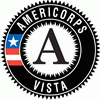Coal Creek provides model for watershed-based Brownfields projects  The Roundtable's online resource collection now includes a Watershed Brownfields presentation prepared by ARCADIS. This presentation introduces the challenges, objectives, and approaches of a Mine-Scarred Lands Brownfields Assessment project in Anderson County, TN. ARCADIS explains the project's geodatabase construction process, sub-watershed prioritization, site identification process, etc. Access the power point presentation here. The Roundtable's online resource collection now includes a Watershed Brownfields presentation prepared by ARCADIS. This presentation introduces the challenges, objectives, and approaches of a Mine-Scarred Lands Brownfields Assessment project in Anderson County, TN. ARCADIS explains the project's geodatabase construction process, sub-watershed prioritization, site identification process, etc. Access the power point presentation here.ForAla expands GIS program to other Roundtable states
 Friends of Rural Alabama worked with the EPA and Jacksonville State University to create the American Environmental GIS (or AEGIS). This website makes certain GIS information available over the internet. Currently, Friends of Rural Alabama is expanding this mapping project thanks to funding from the EPA. Soon, 14 more southeastern states will have similar systems. Creek Clips recently spoke with Dr. Bryan Burgess, Director of Friends of Rural Alabama to find out more about this project. Friends of Rural Alabama worked with the EPA and Jacksonville State University to create the American Environmental GIS (or AEGIS). This website makes certain GIS information available over the internet. Currently, Friends of Rural Alabama is expanding this mapping project thanks to funding from the EPA. Soon, 14 more southeastern states will have similar systems. Creek Clips recently spoke with Dr. Bryan Burgess, Director of Friends of Rural Alabama to find out more about this project.
First, please tell me a little about the history behind AEGIS. What needs did you see?
First, we saw the need to be able to identify potential pollution sites along streams where public access points for water monitoring may be several miles apart and to get more active with scientific data in analyzing non-point pollution sources and prioritizing restoration of Alabama impaired steams. We saw the need for scientific data to show citizens and leaders the major causes of water pollution.
How did you go about solving them?
Friends of Rural Alabama, Inc. (ForAla) formed a consortium of several Alabama conservation groups, applied for and received an EPA grant that began with developing aerial photography techniques that would be cost effective for conservation groups. The focus of the photography was to capture visual documentation of potential pollution sites on Alabama impaired waterways, and we took some 4000 photos for a couple of years over 2700 miles of polluted streams. Then, we built a GIS to map the sites we photographed, and imported 10 years of Alabama Water Watch (AWW) monitoring data as a layer in the GIS so we could combine water quality data with photos of neighboring sites to begin to understand the sources of non-point pollution. more...
How can this project be useful to groups working with mining-impacted waters?
...more. Cumulative impacts of mining, and other pollution sources, can be easily illustrated by showing their footprints of pollution and how footprints overlap to create levels beyond acceptability. We can work with the coal states to map the mining sites and dialogue how best to use the data.
What makes the AEGIS model worth repeating in other states?
Two of the more significant products resulting from the grant included a desktop GIS and the website GIS.We also developed a technique to map animal feeding operations, data heretofore not available for Alabama watershed planning. The creation of a website hosted at Jacksonville State University contains many of the GIS layers where anyone with internet access could view and download the data and use it for assisting with solving some of their own conservation issues. more...
What have you done so far? What is left to do?
Our new EPA grant provides the funds to develop these layers and provide them on a desktop GIS to conservation groups in 14 states. It also funds the hosting of the state website data for the duration of the two-year project. Thus far, we have delivered the Ohio system and trained them. That group has been active and asks lots of questions that help us identify areas of improvement. We are about finished with Illinois and plan on delivering to and training them in December. We have imported the satellite images into GIS format for seven states and created many of the data layers for the states GIS.
Who are some of the groups working with this project?
Rivers Unlimited and Sierra Sentinels in Ohio, Sierra Sentinels and World Wildlife Fund in Tennessee, Sierra Sentinels in Kentucky and llinois. We have lots of interest from other groups, and now with the project underway, we are actively talking with and seeking others to join this project.
How have people reacted to this project?
The Alabama Environmental Management Commission, for the first time, saw a big picture of the quality of Alabama waters... more...
How can people learn more about this project?
more... Publishers of Appalachian weekly look back WHITESBURG, Ky. (AP)...Their small staff of mostly volunteers filed scores of stories that attracted national attention to Appalachia, serving as an impetus for the proclaimed War on Poverty and the 1977 Surface Mining and Reclamation Act. They covered the lack of health care in the hills, the dilapidated schools, jobs lost to the mechanization of the coal industry and dangerous mining conditions. more...
| 
 Friends of Rural Alabama worked with the EPA and Jacksonville State University to create the American Environmental GIS (or
Friends of Rural Alabama worked with the EPA and Jacksonville State University to create the American Environmental GIS (or 



